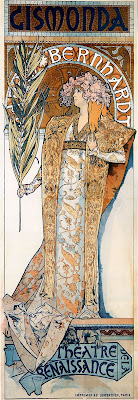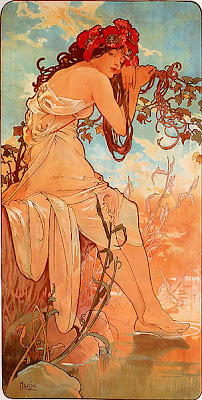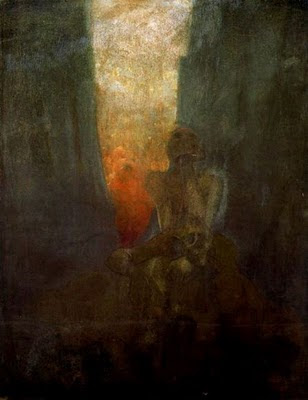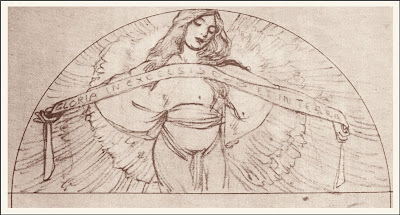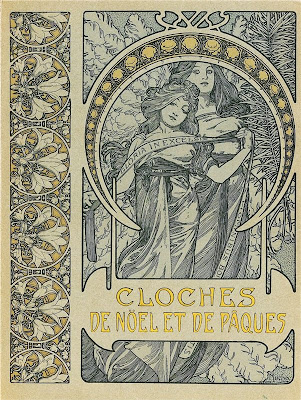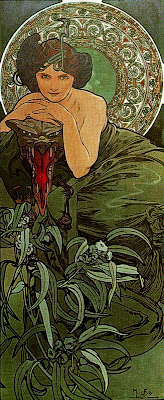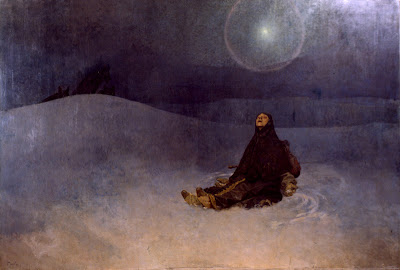As you continue on the walk, through Frank's Park (a piece of woodland once the grounds of a large house, preserved and donated to the council by the widow of Farnk Beadle) you come across this unprepossessing pub. At first glance it looks like another faux-named modern monstrosity, but actually dates from 1643 when this would have been part of a main London-Dover thoroughfare. There seems to be quite a few "Leather Bottles" along this route.
Wednesday, November 30, 2011
REPOSTED FROM LONDON DAILY PHOTO BLOG -- YE OLD LEATHER BOTTLE
As you continue on the walk, through Frank's Park (a piece of woodland once the grounds of a large house, preserved and donated to the council by the widow of Farnk Beadle) you come across this unprepossessing pub. At first glance it looks like another faux-named modern monstrosity, but actually dates from 1643 when this would have been part of a main London-Dover thoroughfare. There seems to be quite a few "Leather Bottles" along this route.
Dark Globe: Refdesk 11-30-11 News Headlines (6:00 am ET)
Prince Narisara Nuvadtivongs: Painting of the Battle between Queen Suriyothai and the Viceroy of Prome in the Burmese-Siamese War of 1548-49, Date unknown -- pre-1947
• Europedelays major debt decisions for 10 days
• Cainlikely to hear from backers and doubters
• Audiohelped sway judge to give Jackson doc jail
• USfinds reassurance in Egypt's peaceful voting
• IvoryCoast's Gbagbo taken into custody at ICC
• NJdad arrested in death of girl tossed in creek
• Clintonseeks greater openness from Myanmar
• PROMISES,PROMISES: Candidates shield records
• Syracuse'sBoeheim not worried about job status
• LApolice raid Occupy camp at City Hall
• Cainlikely to hear from backers and doubters
• Audiohelped sway judge to give Jackson doc jail
• USfinds reassurance in Egypt's peaceful voting
• IvoryCoast's Gbagbo taken into custody at ICC
• NJdad arrested in death of girl tossed in creek
• Clintonseeks greater openness from Myanmar
• PROMISES,PROMISES: Candidates shield records
• Syracuse'sBoeheim not worried about job status
• LApolice raid Occupy camp at City Hall
Protesters gathering in central Rangoon, 1988
NOTE: I don't think I'll be watching the news today. It's just too polarizing. The article about Secretary Clinton's upcoming trip to Myanmar is particularly confusing. If you read it, you'll see what I mean. The pictures here are intended to provide a little context, however. For more information about Prince Narisara Nuvadtivongs, the artist who painted the picture in first position above, please see HERE.
NOTE: I don't think I'll be watching the news today. It's just too polarizing. The article about Secretary Clinton's upcoming trip to Myanmar is particularly confusing. If you read it, you'll see what I mean. The pictures here are intended to provide a little context, however. For more information about Prince Narisara Nuvadtivongs, the artist who painted the picture in first position above, please see HERE.
THE SIGN OF THREE
Sector 19312 was grim yesterday. Wretched, Eternally Wet and Black, barely only briefly verging into the deepestdrabbest Greys.
Add one cheapplastic Korean car, slippery-with-leaves roads, obstacle course detours, and the wine aroma known as "wet dog" and all kind feelings wash down the culvert.
I turnedon the radio looking for a Sign and found Three. (Thank the Lord.)
First, therewas2-4-6-8 Motorway bythe Tom Robinson Band. It had been so long since I'd heard it and it was even better than I remembered. Kinks-derivative but in the best possible way. “Ain’t no use setting up with abad companion.” Amen.
Then 53rd & Third by The Ramones, one of Dee-Dee’s realest, truest memoriesplainly spoken to a tragic melody. Its stiff awkward gait in night-and-day contrast to the group's usual speedy, gleeful kineticism. No smiles here at all, only flayed forms in high relief. I know that corner so well. I used to park my car there.
Finally, New Orleans byGary U.S. Bonds. Sometimes they say “they don’tmake ‘em like that anymore,” but they never really made ‘em like Gary’s noisy,joyful, slippery records, which sound like the Underworld raised to Heaven for party purposes. Caroline worked with Gary during his "This Little Girl of Mine" comeback period and I was lucky enough to meet andshare cocktails with him one night. Gary (Anderson) was one ofthe most intelligent, charming and charismatic people I’ve ever met, one of those men who seem to know everything.
Tuesday, November 29, 2011
All Post-Mod Cons 2 -- The $ 1 million Porsche Design Advent Calendar! (Jesus Is The Reason For The Season)
What do you buy the person who has everything? A$1m Porsche Design Advent Calendar towerof course!
There are just 5 Porsche Design calendarson sale worldwide (one in each continent), and each measures 1.75 metreshigh, is made of brushed aluminium and possesses that sleek exteriorfrom which Porsche have become best known for.
Thecalendar contains 24 windows containing a range of the most exclusive gifts available tomankind, one for each of the days leading up to Christmas Day. Someof the gifts include a Porsche Design P’6910 Indicator watch in rosé gold, an individualcustomisable Porsche Design kitchen and a custom-made motor yacht by Porsche’s studio in Austria.Obviously the kitchen and the 8.5 metre-long yacht would struggle to fit insidethe windows, so they are represented by illuminated aluminium plaques. Othersurprises include 18 carat gold sunglasses, a pair of diamondcufflinks and a pair of Adidas Bouncetrainers – one of the most expensive trainers money can buy at $480 per pair.
Parakeet Hero (God Is In The Details): Roy Wood's Music Book Is Released
Shazam Period
Tonight I am a hero to my parakeets.
As I’ve previously mentioned, Skip and Flip live inCaroline’s office. Their large birdcage is adjacent to the Mac that houses our digital music collection, but they're mostly left free to fly around, which they do all day. The birds love music and Caroline frequently entertainsthem with tunes and sound effects thatcolor the various news stories she reads and websites she visits.
Skip and Flip have a distinct preference for military-style music – marchesand the like, which tend to accompany stories about the personal appearances of world leaders, e.g. Queen Elizabeth II, Hugo Chavez, Vladimir Putin. Our birds are lively,interested -- “there and aware” -- of nature’s sounds just beyond the office's casement green glass windows.
Roy Wood’s Music Book arrived from Amazon UKtoday. It’s Roy’s firstsignificant record release in a very long time and signals, I guess, that this great artist has finally madepeace with EMI Records (just in time for EMI's recently announced Armageddon).
Skip and Flip
Music Book collects Roy Wood music spanning his work in TheMove, Electric Light Orchestra (Roy’sBraniac brainchild; he abandoned and ceded the group to Jeff Lynne for still mysterious reasons aftertheir first startling, groundbreaking lp), the super-successful (in the UK only) Wizzard, and his extraordinary solo music beginning with Boulders and extending to his frame-breaking present-daybig brass band efforts.
The anthology evencontains a couple of curious “cover” interpretations like Nancy Sinatra’s version of TheMove’s iconic (it was the first track ever played on BBCRadio One and the subject of a successful libel suit by then-Prime Minister Harold Wilson) “FlowersIn The Rain” and Status Quo’s excellent take on the pivotalearly Move single “I Can Hear The Grass Grow.”
The anthology evencontains a couple of curious “cover” interpretations like Nancy Sinatra’s version of TheMove’s iconic (it was the first track ever played on BBCRadio One and the subject of a successful libel suit by then-Prime Minister Harold Wilson) “FlowersIn The Rain” and Status Quo’s excellent take on the pivotalearly Move single “I Can Hear The Grass Grow.”
What the birds really love, though, are Roy’s dreamy swingy ballads – “LookThrough The Eyes Of A Fool,” “Forever,” “Any Old Time Will Do” and “This Is TheStory of My Love.” They approveof the fact that Roy, an awesome, sometimes raunchy lead guitarist (e.g., his version ofMann-Weill’s “Don’t Make My Baby Blue” on The Move’s Shazam) eschews that typeof material here in favor of pocket symphonies like Wizzard’s “SeeMy Baby Jive,” “Ball Park Incident” and “I Wish It Could Be Christmas Everyday.”
Wizzard Roy
Watching Skip and Flip bobbing their heads, glancing obliquely in synchronous motion at the ceiling and deliberately and slowly marching in place, I know we're all on to a goodthing. I find myself parroting (orparakeeting) their movements. Obviously, they’re responding to the music (including what Roy’s voice intonates and communicates,of course) and not directly to the delicate, clever lyrics, which have always painted the portrait of ahighly aestheticized, romantic man keen on keeping the stoic mask in place, butwith eyes peering through, revealing everything. Roy Wood's music is God-in-the-decorative details come alive, ornamentation wordlessly explaining everything.
The Move (l-r: Roy, Ace, Bev, Trevor, Carl)
Music Book is a major release (36 tracks), which will probably notreach the large audience it deserves. Butit’s great to have this material collected in one place, beautifullyremastered, bright and new for Christmas. It's a gift we and Roy both deserve this year.
Electric Light Orchestra (l-r: Roy, Jeff, Bev)
Confession:
My two most intense rock and roll memories are hearing Shazam for the firsttime (just the sound of it gripped my brain like nothing else ever has on initial acquaintance)and attending my first Roy Wood performance at Annie Haslam's War Childbenefit concert at Irving Plaza in New York sometime during the 1990s. Long after The Move's and Wizzard's heyday, most of the audience had never seen Royplay live before (his U.S. touring history was legendarily spotty and negligilble) and he was definitely the main event that night in Manhattan. With Cheap Trick ablybacking him, it was fascinating to see every other act on the bill (consisting ofkey members of Procul Harum, Yes, the Moody Blues and others) standing rapt, visiblyin the wings to witness Roy’s astonishing presentation. That sort of thing never happens.
Boulders Roy playing everything
3. Green Glass Windows (Roy Wood Link)
4. Interested parties can visit Skip and Flip bio link, line 2 above.
4. Interested parties can visit Skip and Flip bio link, line 2 above.
Labels:
Carl Wayne,
Electric Light Orchestra,
Green Glass Windows,
Holly Wood,
Nancy Sinatra,
Roy Wood,
Roy Wood's Music Book,
Shazam,
Skip and Flip,
Status Quo,
The Move,
War Child,
Wizzard
Alfons Mucha y su elegante Art Nouveau.
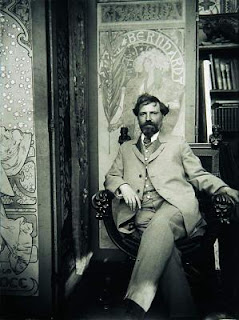 Alfons Mucha, pintor, grabador, escultor, diseñador, artesano y dibujante checo, (Ivancine, Moravia, 24 de Julio de 1860- Praga, 14 de Julio de 1939). Interesado por el dibujo desde la adolescencia, pretende cursar estudios en la Academia de Artes Plástica de Praga en 1877, siendo su petición denegada. En consecuencia, de manera circunstancial trabaja como decorador de una compañía teatral y retratista a lo largo de la década de los ochenta, e incluso da comienzo a su andadura profesional como artista entre Viena y Munich, donde ingresa en la Academia muniquesa. No obstante, será su posterior marcha a París en 1887 quien le abrirá las puertas del éxito y la popularidad, tras formarse en la Academia Julian de la capital francesa, gracias en gran medida al mecenazgo del conde Khuen-Belassi. Establecido en la ciudad del Sena, publica sus ilustraciones de manera regular en diversos diarios y diseña varios carteles (el primero en 1894) para la reconocida actriz teatral Sarah Bernhardt y su teatro de la Renaissance. Además, se encarga de la decoración del pabellón bosnio en la Exposición Mundial de 1900. De igual manera, a lo largo de su periplo por tierras francesas, se postuló como uno de las piedras angulares del denominado Art Nouveau. De hecho, sus carteles publicitarios (basados en un tratamiento de la fotografía, absolutamente innovador y original), estampas, dibujos, paneles decorativos, entre otras muchas de sus aportaciones, le consagraron como una figura fundamental y extremadamente virtuosa en cada uno de los géneros que trabajó.
Alfons Mucha, pintor, grabador, escultor, diseñador, artesano y dibujante checo, (Ivancine, Moravia, 24 de Julio de 1860- Praga, 14 de Julio de 1939). Interesado por el dibujo desde la adolescencia, pretende cursar estudios en la Academia de Artes Plástica de Praga en 1877, siendo su petición denegada. En consecuencia, de manera circunstancial trabaja como decorador de una compañía teatral y retratista a lo largo de la década de los ochenta, e incluso da comienzo a su andadura profesional como artista entre Viena y Munich, donde ingresa en la Academia muniquesa. No obstante, será su posterior marcha a París en 1887 quien le abrirá las puertas del éxito y la popularidad, tras formarse en la Academia Julian de la capital francesa, gracias en gran medida al mecenazgo del conde Khuen-Belassi. Establecido en la ciudad del Sena, publica sus ilustraciones de manera regular en diversos diarios y diseña varios carteles (el primero en 1894) para la reconocida actriz teatral Sarah Bernhardt y su teatro de la Renaissance. Además, se encarga de la decoración del pabellón bosnio en la Exposición Mundial de 1900. De igual manera, a lo largo de su periplo por tierras francesas, se postuló como uno de las piedras angulares del denominado Art Nouveau. De hecho, sus carteles publicitarios (basados en un tratamiento de la fotografía, absolutamente innovador y original), estampas, dibujos, paneles decorativos, entre otras muchas de sus aportaciones, le consagraron como una figura fundamental y extremadamente virtuosa en cada uno de los géneros que trabajó.Perfecto ejemplo del modernismo, residió en EEUU durante los primeros años del siglo XX (1904-1910), hasta que a partir de 1910 decide retornar a su tierra natal y centrar exclusivamente su última etapa artística y profesional en la pintura histórica y monumental. Un ciclo de veinte cuadros colosales, tales como la Epopeya Eslava, ponen de manifiesto una estética delicada, elegante y seductora.
Reconocido por su inconfundible estilo, muestra una clara inclinación a la curva y la contracurva unida al exquisito arabesco, la exuberancia y el exotismo patente en sus más afamados carteles modernistas.
Único en su legado, representa con las esbeltas figuras femeninas, místicos paisajes y suntuosas decoraciones, la producción de un genio consagrado a los sentidos.
Tres años antes de fallecer en 1939 (a causa de una pulmonía en pleno proceso interrogatorio de la Gestapo tras ser detenido), publicó su autobiografía.
Como curiosidad apuntar, la cercana amistad que mantuvo con los también artistas: Auguste Rodin y Paul Gauguin.
Gismonda, (1894).
Amantes, (1896).
Primavera, (1896).
Verano, (1896).
Invierno, (1896).
Salammbo, (1896).
Cartel para Nestlé, (1897).
Savonnerie de Bagnolet, (1897).
Danza, (1898).
Frutas, (1898).
Job, (1898).
Carteles para las obras Hamlet y Medea, (1899).
El abismo, (1899).
Proceso para la creación del cartel de: Cloches de Nöel el Páques, (1900).
La esmeralda, (1900). Modelo y obra.
La Brunette, (1901). Modelo y obra.
Escultura: Cabeza de mujer, (1902).
Joya diseñada por Mucha, (1905).
Lottery of nationality, (1912).
Los eslavos en su tierra original, (1912).
Apoteósis de los eslavos.
Mujer en el desierto, (1923).
Vidriera en la catedral de San Vito de Praga, (Comienzos de los años 30).
Monday, November 28, 2011
WHATEVERSHEBRINGSWESING -- 40TH ANNIVERSARY TODAY
I'm looking ‘round madly
For something to find
That might give me a Front
To put something Behind.
For something to find
That might give me a Front
To put something Behind.
Subscribe to:
Posts (Atom)



















